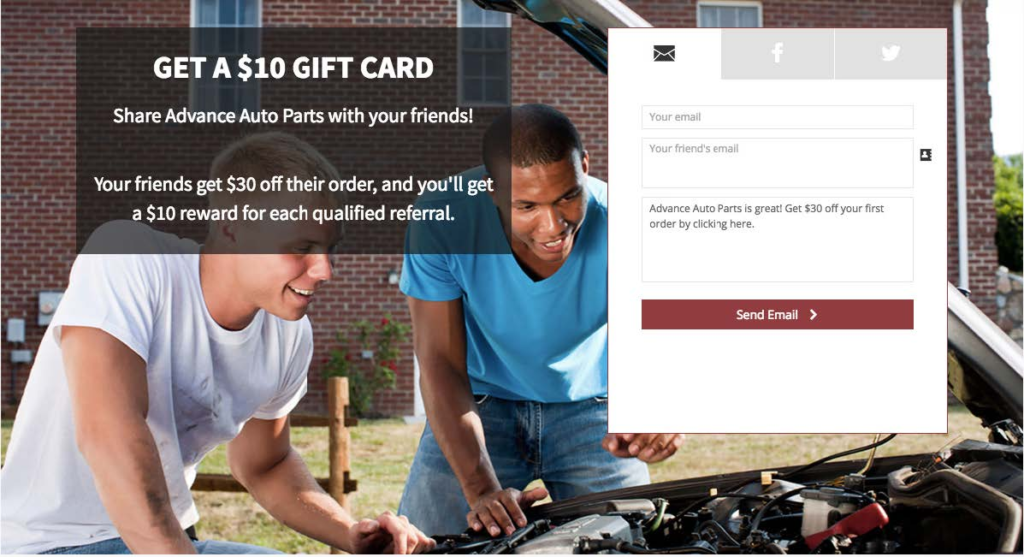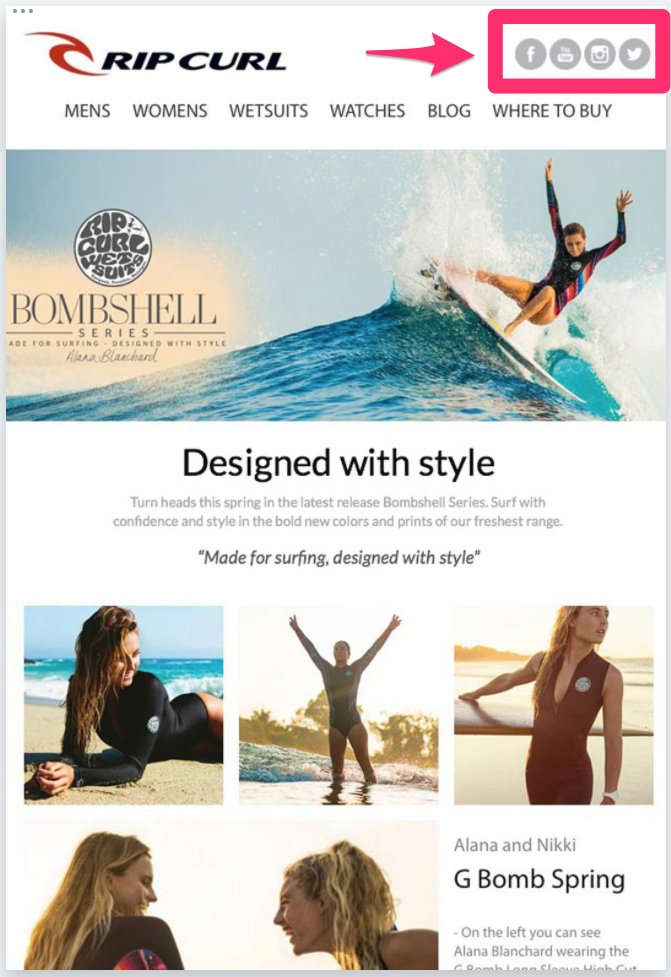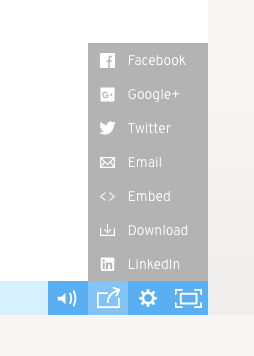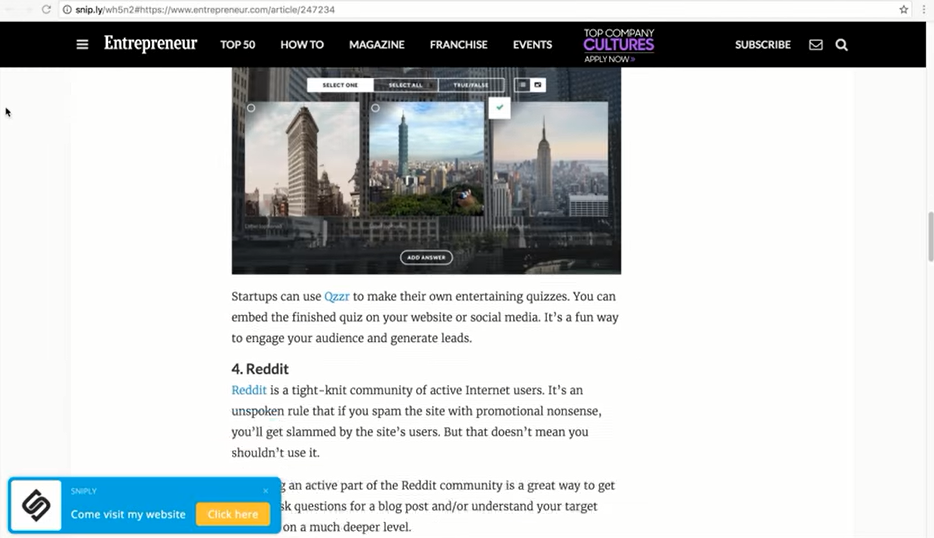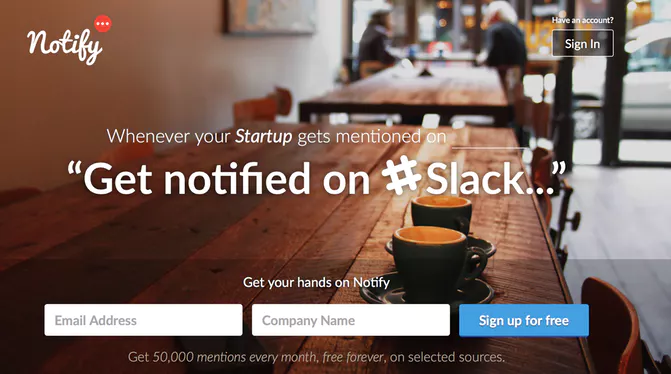Your customers don’t hang out in one place online. They’re scrolling through their Facebook feed first thing in the morning to catch up on updates they’ve missed, firing off a quick tweet or two as they grab a coffee and browse their Snapchat feed throughout the day.
Your customer’s attention is split across a ton of different platforms, so your content has to be everywhere as well if you’re to have a chance of getting noticed. That’s why it’s important for you as a marketer to know your audience and speak to them in the places they spend time.
Treating social media as a one size fits all strategy means you end up missing opportunities to engage with a wider range of customers in your target audience. Plus, if you have goals like increase ROI or conversions, you have no way of tracking data if you aren’t clear on who you’re marketing to and why.
The right set of tools will help you figure out where people spend time online, help you engage with customers and expose your brand to more people.
We broke down the top tools according to category, from social sharing to content management, to help you figure out where and how to share your content. Here’s a list of the top 20 tools to get you started.
Social sharing
Because the use of social media is so widespread, there’s no shortage of social sharing platforms to choose from. To figure out which ones will work best for your campaigns, you need to be clear on your objectives. Do you want to increase conversions, ROI or engagement through social sharing? Here are the best tools to help you create a campaign strategy to meet your objectives.
Extole
Referral marketing is one of the most powerful ways for you to use the influence of current customers to grow your user base. If your business is at a stage where growth in your customer base is the main objective, use a tool like Extole to help.
Extole is a referral marketing tool that lets marketers create, share and analyze referrals. What makes it so helpful is the fact that it gives you the option to let your advocates share referrals across many different channels. Typically, when you think about referrals, the first thing to come to mind is an email campaign. But with Extole, your advocates can share referrals via social media as well.
The people your advocates share content with are similar to your target audience. So if your advocates spend a lot of time on Facebook, chances are their friends and family do as well. By giving advocates the option to share how they want to, you position yourself to meet the goals you’ve set for the campaign. Customers need flexibility and this sharing feature caters to that need.
Campaign Monitor
As an email marketing tool, Campaign Monitor lets you share your email campaigns on social media. For example, you can include links in the email to your social media pages and encourage email subscribers to click on them and post comments. So rather than just sending an email with a standard CTA, use links to social media to get customers to engage.
You can also add “Like” or “Share” buttons to your email campaigns to make it easy for recipients to share on Twitter or Facebook. Even though these social clicks amount to a small percentage of total email click-throughs, it’s a best practice that gives your email subscribers options for places to interact with and follow you.
Emails represent information at a moment in time, whereas social media is constantly updating. These regular updates help to keep customers engaged and give you another avenue to capture and analyze behavioral data.
AdEspresso
When it comes to advertising and attracting new customers, Facebook ads are one of the most powerful tools at your disposal. This is because of the over 2 billion daily active users Facebook has. When you set up your ad campaign, Facebook lets you filter their massive audience down to your specific niche and send relevant and targeted ads.
AdEspresso is a tool that helps you manage your Facebook ads. For example, depending on your campaign objective, you can use AdEspresso to run A/B tests. You can test things like which images or CTAs get the most click-throughs. You can then use the information you get from running your experiments to analyze your target audience. For instance, find out when to run ads based on when your audience is most likely to be responsive.

In addition to this, AdEspresso also offers tons of content on social advertising across other social networks. So even if the majority of your customers spend time on other platforms, AdEspresso still helps you build a campaign specific to your audience.
Hubspot
HubSpot is an inbound marketing and sales platform that helps you manage your leads. HubSpot helps you get to know your leads better in order to help you convert leads to customers. Their platform also offers social features to help you share your website, blog or other content you create in HubSpot, on social media. With this feature, you can share the content you publish manually or automatically.

As you share, you can track and get insights on how well your shares are doing across different social media channels. For example, if you see a dip in engagement on Twitter, you can trigger notifications to your customer success team to engage with followers to find out more about their experience. You can then use this customer feedback to make adjustments to processes, features or maybe even your product.
Zapier
With all the apps and tools available for you to use, Zapier acts like a bridge to connect them and improve workflows. There are hundreds of integrations to choose from to help you link most of the apps you already use. Zapier makes organizing social sharing highly customizable because of all of these integrations.
Here’s what a social sharing workflow could look like using Zapier:
Let’s say you write a blog post and want to share it with all of your social media followers. All you have to do is connect your RSS feed to each one of your social media pages and create a “zap” for each one — using “if this, then that” logic. Once you click publish, your posts are automatically shared with your followers.
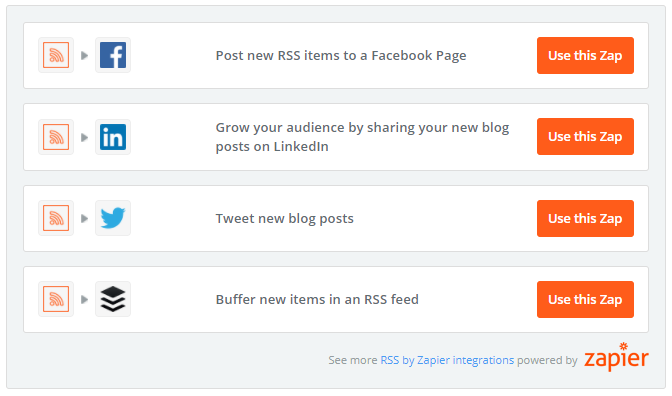
You can take sharing one step further and customize what kinds of content appear on different platforms. For example, you can set up Zapier to share product updates on Twitter only — based on your analysis that shows this type of content performs best there — and more general blog content on Facebook where people might be more willing to take time to read longer posts.
Wistia
76% of businesses agree that videos help improve ROI. It’s because of this value that tools like Wistia exist. In addition to making video production more user friendly, Wistia also makes it easier for marketers to share video content on social media.
Once you upload your video to your site, people have the option to share it on a few different social media platforms.
This works in your favor because it doesn’t matter if your video gets downloaded and uploaded somewhere else. Wistia “wire[s] the URLs to the first page where the video is embedded” so that social shares still link back to your pages.
Squarespace
Squarespace isn’t just a website building platform, it also helps you promote your website and content on different social media platforms. Once you hit publish, your content will be seen on Facebook and Twitter. You can take your sharing even further by adding social media buttons that make it easy for your customers to share content with their network of followers. This helps with brand awareness because even more people get a chance to see your product.
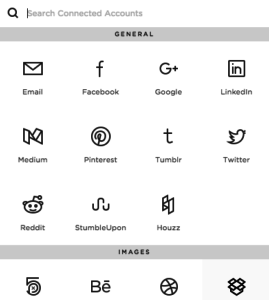
For people visiting your website for the first time and aren’t familiar with your social media profiles, Squarespace lets you incorporate Content Blocks into your website. This way, anything you post on sites like Twitter, Instagram and Flickr will show up on your website. This is a great way to engage new customers and drive them to check out your social media profiles.
Eventbrite
Eventbrite has social sharing features that help you extend your reach so that the events you host are seen by the widest audience possible.
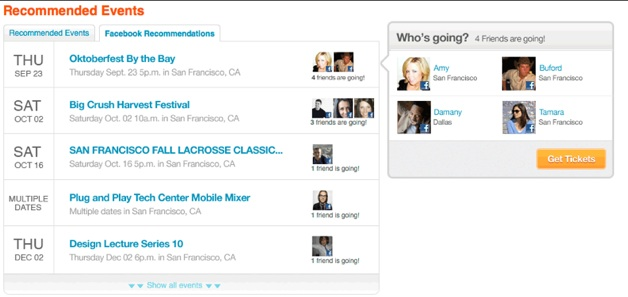
If users connect their Facebook account, when they browse Eventbrite they’ll see your event and which of their friends are also attending. You can also give users the option to share events via Twitter, LinkedIn or email. You can also add an “events near you” filter so that your local target audience sees the event.
These features help to get awareness for your brand and increase the likelihood of new customers testing out your product.
Lead generation
When you’re sharing across different channels you’re bound to get a lot of new attention. The trick is to take that attention and turn it into leads to grow your business. Here are some tools that make it easier to learn more about your leads so that your social sharing is more targeted.
Clearbit
Clearbit is a tool that helps you enrich the user data you collect. Let’s say you have a newsletter signup on your website with fields for user name and email address. If you add a simple snippet of code to the form, you’ll be able to find out which social media platforms these people use.

You can then take your enriched data and segment the users into groups based on which platforms they use. From there, target each group based on the channels they use. You can also use the information you collect to figure out who your influencers are. Look for things like their total number of followers, their role in their company or the industry they work in. All of this can be used to target users with specific messages that help you reach and convert more people.
Infusionsoft
Infusionsoft helps you track and organize your user data. It integrates with a lot of other tools so you can link with social channels like Facebook and Twitter.
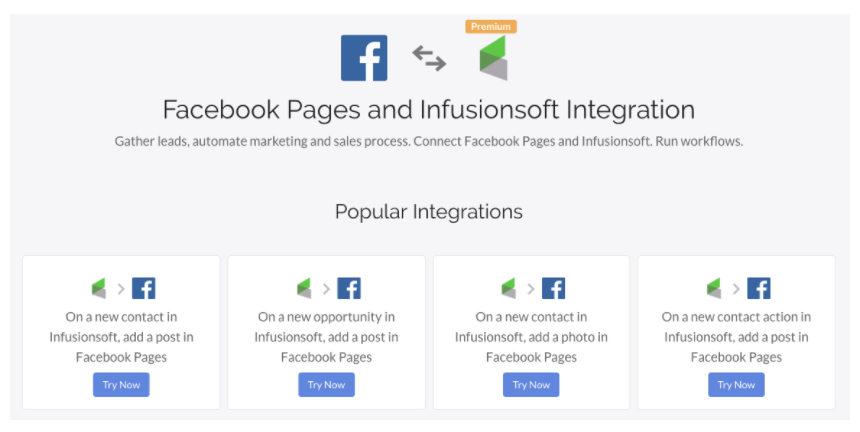
Let’s look at how it works. Because we’re talking about lead generation, you can use Infusionsoft’s Facebook Lead Ads Integration to create workflows. So as new leads come in from your Facebook ads, they’re automatically uploaded to Infusionsoft. From there you can analyze the data to find out more about your leads.
For example, do your leads fit your target audience specs? If so, what actions did they take when they found your ad? When they click-through do they search certain pages on your website or do they head straight to checkout? Use this information to enhance your campaigns so they’re in line with your leads’ expectations.
You can also set up a marketing automation workflow. So when the new leads come in, this can trigger a welcome email or a notification to your sales team to followup.
snip.ly
Sniply lets you add a CTA to the links you share online to drive conversions. For example, when you find content online that you’d like to share with your users, you usually share a link on Facebook or Twitter. The only downside is there’s nothing to drive your audience back to your website to see for themselves why the content relates to your product.
With Sniply, instead of just sharing the content and calling it a day, it lets you create and then share a custom CTA to drive readers back to your website.
When people click on the link you share, a CTA pop-up appears at the bottom of the page. Customize the message on the CTA to encourage people to take the next step and find out more about you.
Content curation
When you think about content curation, the first thing to come to mind might be to send a survey to customers or get new users to fill in forms during onboarding.
Fortunately, there are more ways to learn about your customers without asking them to fill in more forms or take extra steps. The less your customers have to do, the better. It’s important to learn as much as you can about your customers because the more you know about them and the channels they use, the better able you are to cater to their needs and offer relevant content.
yotpo
Yotpo lets you collect user generated content such as customer reviews, feedback and comments from social media. You can also use Yotpo to ask your customers for reviews on your product, and then share that information on social media.
You can even personalize the content you receive. For example, you can let users add pictures to reviews. This is how Yotpo explains this feature, “we make it easy for customers to submit photos with their reviews. 77% of shoppers prefer authentic customer photos to professional ones.”
Yotpo integrates with a variety of social media platforms — like Facebook, Instagram and Pinterest — to help you increase your marketing reach. The user generated content on these sites acts as social proof because the more positive content current users share, the more likely new customer are to trust your product and want to try it out.
moz
Moz is a keyword search tool to help you enhance the content you share with customers. It helps you find, analyze and use keywords to rank in search engines.
Moz is also an incredibly helpful platform for sharing information across different social media channels. For example, use Moz to track how well different kinds of content perform — in terms of views, conversions, etc. — and use the results to decide where you’ll place content.
You can see the information you’ve tracked in one place on the dashboard. There you’ll find all of the metrics for the channels you use to share information. Use this information to figure out what kinds of content resonates with different social media audiences. The key is to use the information to target the right people so that content like promotions are more likely to be successful.
Sonar
Sonar Platform is a tool that allows you to search through social media to see what people are saying about your business or even about your competitors. It’s no secret that people are highly connected these days and share a good chunk of their thoughts on social media.
That’s why Sonar makes it easy for you to listen to your customers, track their preferences and understand their frustrations. You can use this information to develop or adjust campaigns to be more in line with your customers’ needs.
Use their dashboard to see where your keywords have been used and compare that to your competitor’s numbers. You can also see who has mentioned your keywords. If you’re getting mentions from influencers, target them with specific campaigns to get them to keep sharing your content across their social channels.
Sonar also offers a sentiment analysis feature that measures how people feel about your brand. Use this information to tailor your message to specific audiences on different social channels.
Content management
As you share content across different channels, you need a way to organize and plan how you share. Different platforms need different kinds of media, image formats and content specs. You need tools that will manage this and give you an organized system for scheduling, posting and responding to comments across all your social platforms.
Staying organized and on top of opportunities is important as you start getting feedback, running analysis and implementing your plans to optimize your social sharing.
Hootsuite
Hootsuite acts like a social media manager. It’s really helpful because you likely have multiple social media accounts to manage, with different messages going out at different times. Hootsuite helps you keep all of that information organized in one place.
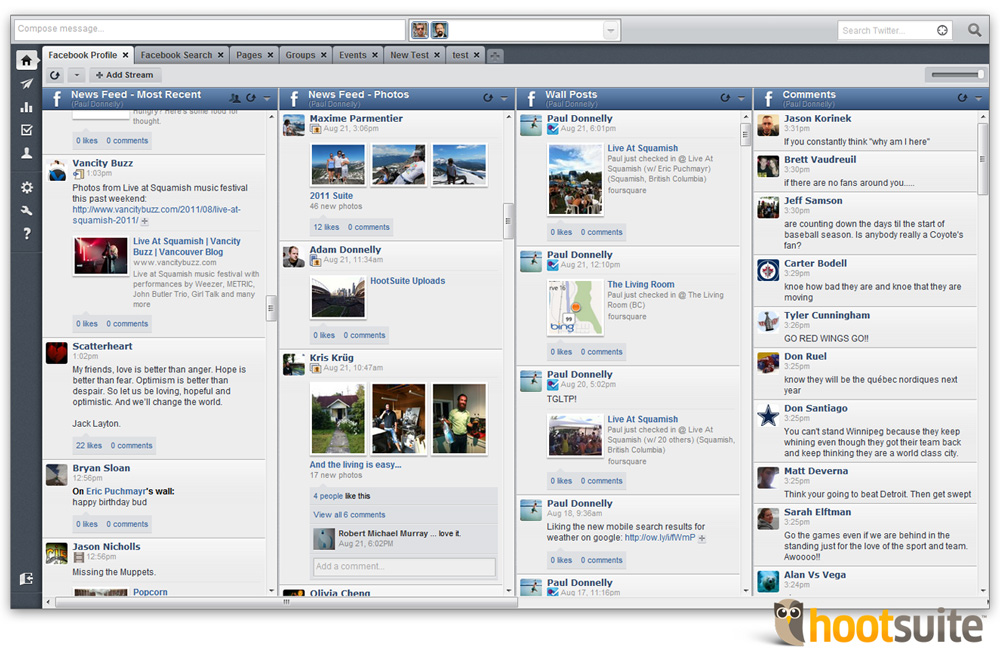
To save time managing your social media and sharing, you can queue up all the posts for the platforms you use, so you don’t have to keep checking in. For example, use Hootsuite to post things like product updates and industry news. Instead of taking time to manually upload this information, you can instead spend your time interacting with customers by answering questions or responding to comments to help improve customer experience.
Airtable
Airtable is a collaboration tool that helps you organize all of your social media content. When it comes to social sharing, use Airtable to manage your campaigns.
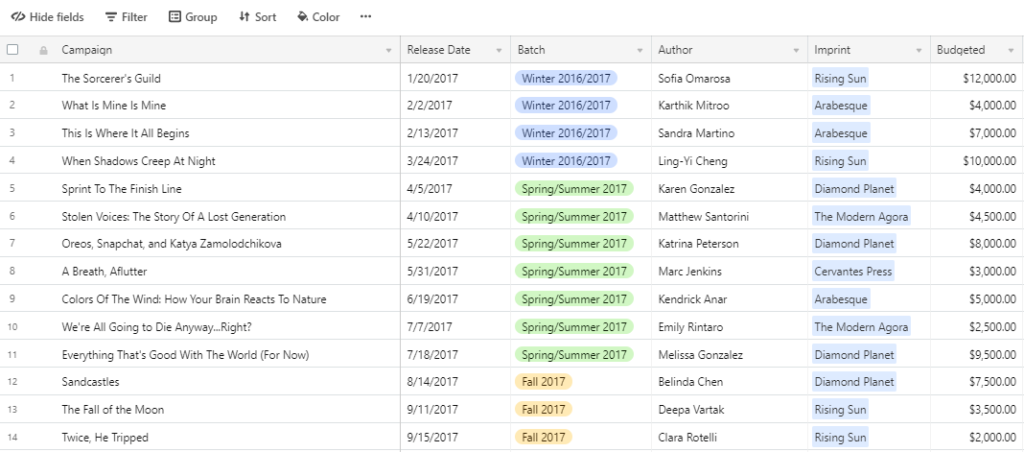
Simply upload details of your campaign and enter inputs such as timeline, teams and budget. Within each campaign record, Airtable lets you track the various social media platforms your campaign will appear on. For example, one campaign might run on Instagram and Facebook while another only runs on Twitter.
You can even track each social media platform separately within a campaign and let teams upload and share notes. Figure out which campaigns have the most engagement and highlight any adjustments you might need to get more customer interaction or conversions.
Tools to enhance your content sharing experience
The following tools weren’t made specifically for social sharing but can be used to enhance how you share content with your customers and internally. Depending on the outcomes you’d like to see for your social sharing campaigns, these tools will help you meet your goals.
Slack
Slack is a team collaboration tool. It’s a little like social media for teams in that you can share content internally and cater to the needs of your teams. You can even @ mention team members the way users notify each other on social media.
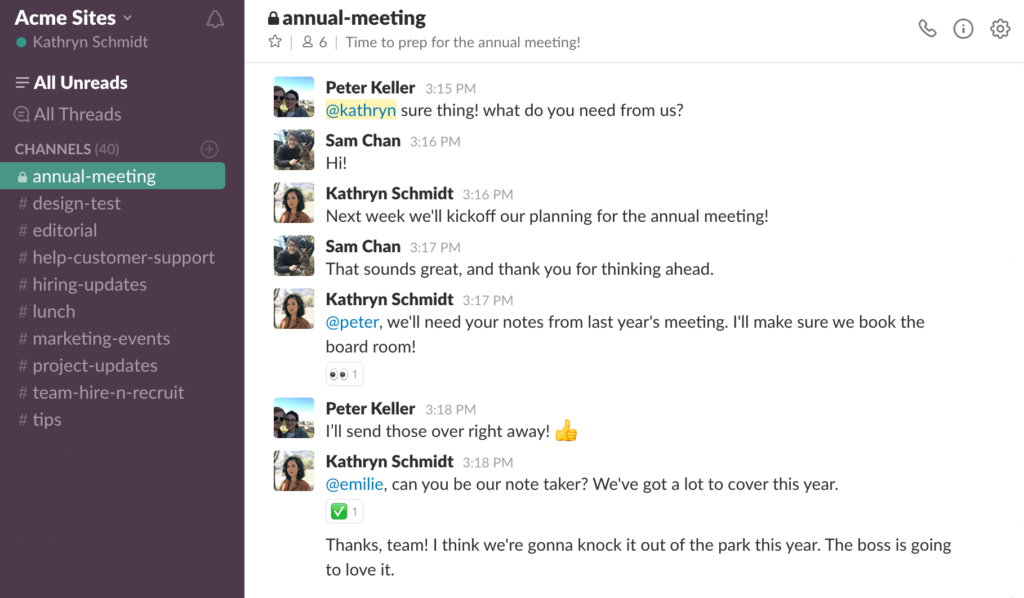
Slack is like an internal knowledge base so teams can approach things like brand awareness strategically. For example, there might be certain standards for teams to follow when interacting with customers on different social platforms. This can be shared and discussed in Slack.
You can use Slack to offer information about things like product updates and enhancements to make sure that your team is on the same page about your product. To do this, set up channels to address the details of specific topics.
Socialbakers
Socialbakers helps measure social media performance on platforms like Facebook and Twitter. Because Facebook is one of the most used social platforms available, Socialbakers helps you use social media data to ensure that your campaigns are performing as expected.
The way it works is, you enter your social media advertising spend and compare it to information available for your competitors. From there, adjust your advertising strategy to improve metrics like reach, CPC and relevancy score.
From there, you’re able to use the data you collect to create targeted campaigns for Facebook, Twitter, Instagram, Pinterest, YouTube and LinkedIn. As you make adjustments, track the results over time to figure out how successful you were.
Canva
Canva is a design tool that has a collection of social media layouts for Facebook, Pinterest, Twitter, Google + and Instagram. So instead of having to figure out the specific dimensions for the images you use across different social platforms, Canva does the work for you. All you have to do is upload an image of your choice or choose one of Canva’s templates and a stock photo from their extensive library to get started.
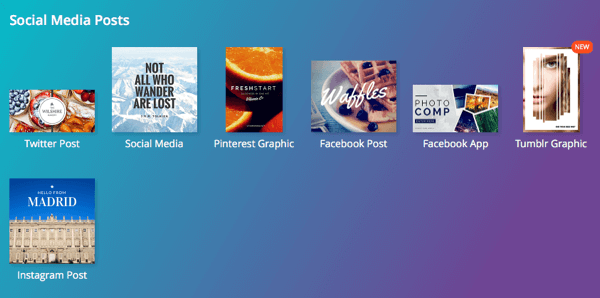
With the heavy lifting already done for you — in terms of formatting social media posts — your customers will be more likely to click on your posts. For one, these posts are visually appealing and in line with customer expectations.
Image Sharer
We all know that visual content performs much better than text heavy content, so why is it hard for users to share your visual content online? It’s easy for users to highlight text they come across online and share it via Twitter but it doesn’t work the same way for images. That’s where Image Sharer comes in. It’s a tool designed to make it easy for users to share your images online.
All you have to do is specify where your images can be shared. You can choose platforms like Facebook and Pinterest where users are drawn to visual content. Then you decide where the social icons will appear on the picture where users hover over them.
By giving users an easy way to share your visual content, more people will see it and have an easy way to reach out and interact with you. New leads don’t have to do a separate search for your company to find out more about you. They just click on an image and browse your website.
Notify
Notify will notify you on Slack or Hipchat whenever your company or product are mentioned online. This is really helpful in helping you figure out how successful your campaigns have been and whether your target audience is talking about you with each other. Because more teams are using Slack and HipChat for internal communication, notifications on these platforms let you react quickly. If comments aren’t positive, you can start to plan a campaign to compensate.
Notify is easy to set up, simply create notifications and choose what you’d like to see in each one. You can choose things like your company name or a competitor. Then choose the sources you’d like Notify to check. This can include platforms like Twitter and Facebook.
Once you’ve set up your notifications, sit back and wait for the insights to roll in.
Get started
Now you have a complete toolkit to get started on your social sharing journey. Be clear on the objectives of your campaigns and choose the tools that will help you get the results you want.
Because your customer needs will change, don’t shy away from trying different tools at different times. The point is to adjust your toolkit as needed to stay in line with the goals you’ve laid out. Be flexible and you’re bound to see the results you’re after.
P.S. If you liked this article, you should subscribe to our newsletter. We’ll email you a daily blog post with actionable and unconventional advice on how to work better.

